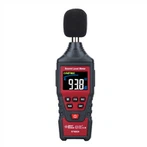(1) It can be used for low-voltage nuclear phase measurement to measure whether any wires in the line are in phase or out of phase. The specific method is: stand on an object insulated from the earth, hold a test pen in each hand, and then test on the two wires to be tested. If the two test pencils glow brightly, the two wires are different. On the contrary, it is in the same phase, which is judged by the principle that the voltage difference between the two poles of the neon bulb in the test pen is proportional to its luminous intensity.
(2) It can be used to distinguish between alternating current and direct current. When testing with a test pen, if both poles in the neon bulb of the test pen glow, it is alternating current; if only one of the two poles glows, it is direct current.
(3) The positive and negative poles of direct current can be judged. Connect the test pen to the DC circuit to test, the neon bulb that glows is the positive pole, and the non-lighting pole is the negative pole.
(4) It can be used to judge whether the DC is grounded. In the DC system with insulation to the ground, you can stand on the ground and use the test pen to contact the positive or negative pole of the DC system. If the neon bulb of the test pen does not light up, there is no grounding phenomenon. If the neon bulb is bright, it means that there is a grounding phenomenon, and if the neon bulb is bright, it means that the positive electrode is grounded. If it shines on the finger end, it is the negative ground. However, it must be pointed out that in a DC system with a grounding monitoring relay, this method cannot be used to determine whether the DC system is grounded.
AC Voltage Tester Pen GD116B :
Pls Clink Below Photo and Read more details about this AC Voltage Tester Pen GD116B :






